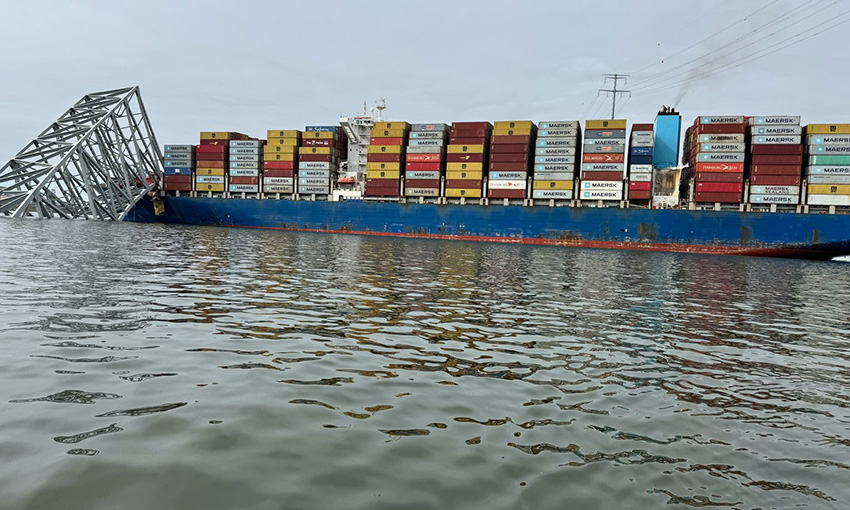THE north-eastern US port of Baltimore is isolated from sea traffic after a powerless Maersk containership collided with a pylon of the Francis Scott Key Bridge, causing it to collapse into the Patapsco River.
Despite earlier fears of mass casualties reports now indicated only eight bridge workers may have been caught up in the collapse, with six still missing. The 9962 TEU Dali, which had not long departed the Seagirt Marine Terminal on a voyage to Colombo on Maersk’s TP12 loop, was able to issue a mayday call that enable police to block traffic at either end of the 1.6-mile bridge.
The 11,032 DWT vessel, built in 2015, had two pilots on board at the time of the collision, which occurred at around 0130 local time. Video of the collision shows the ship’s light flickering as it lost power.
There were no casualties aboard the ship but a section of the collapsed bridge is draped across its bow.
The Singapore-flagged Dali was built for Greece’s Oceanbulk but acquired in 2016 by the Tung family’s Singapore-based private investment company, Grace Ocean, which owns around 30 container ships, reefers, LPG carriers and bulk carriers and acts as a tonnage provider for other operators. Dali has made a couple of call to NZ’s Tauranga, when deployed on Maersk’s AC3 service between Latin/South America and Asia.
According to The Loadstar Baltimore normally handles around 1.1 million TEU per annum (21,000 TEU per week) but its importance is far greater to the automobile trade as it is the East Coast’s major gateway, importing and exporting over a million vehicles a year.
Neither of the ANZ-ECNA container services, Maersk’s OC1 and CMA CGM/Marfret’s PAD/NASP, call Baltimore but it is used by PCTC operators Hoegh Autoliners, Wallenius Wilhelmsen and Grimaldi, and the Wallenius Wilhelmsen vessel Carmen, which was due to have departed yesterday for Australasia, is believed to be trapped in port.





